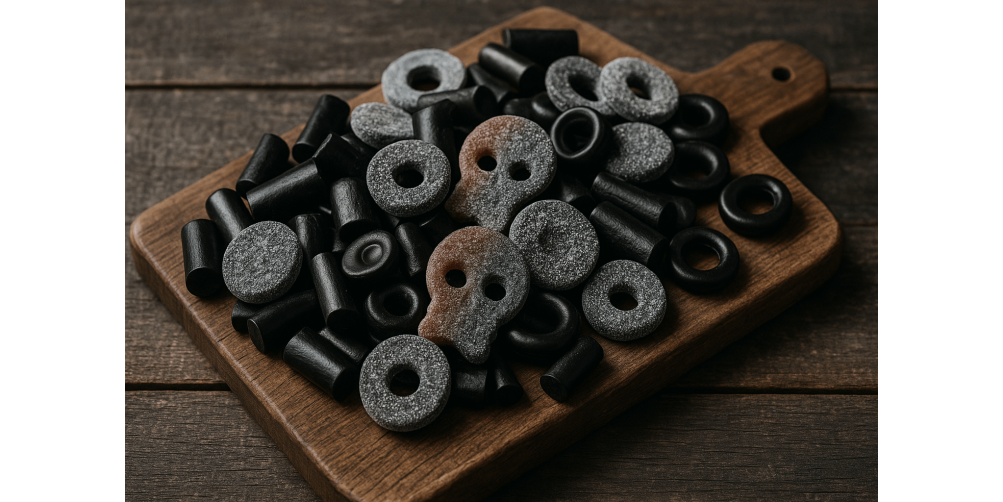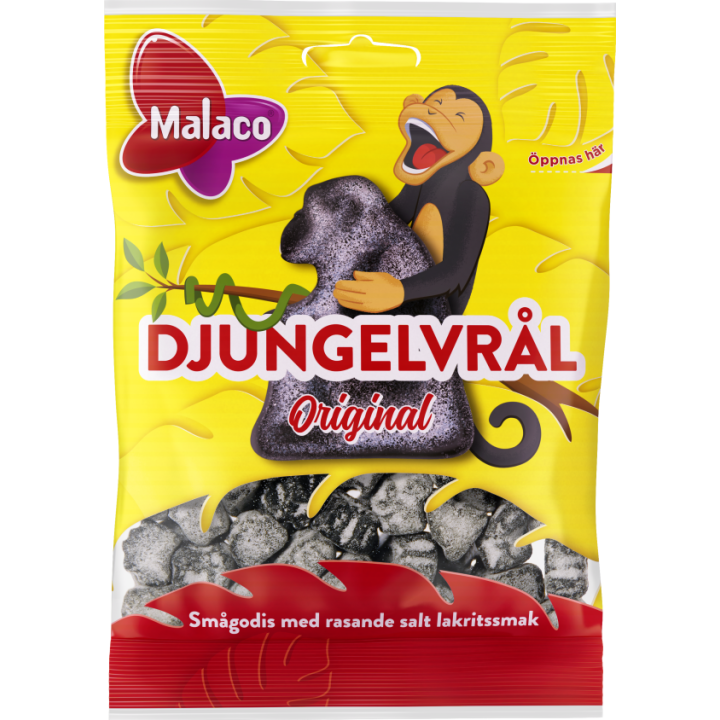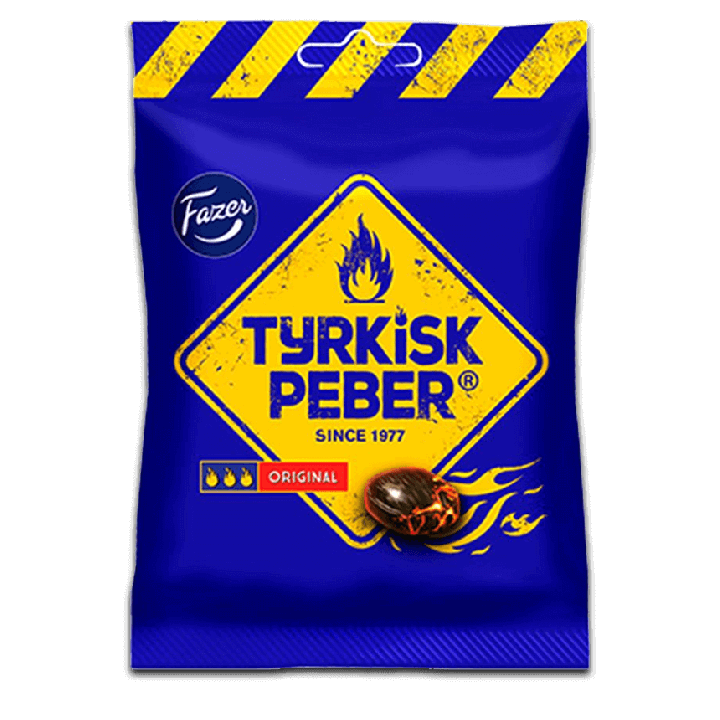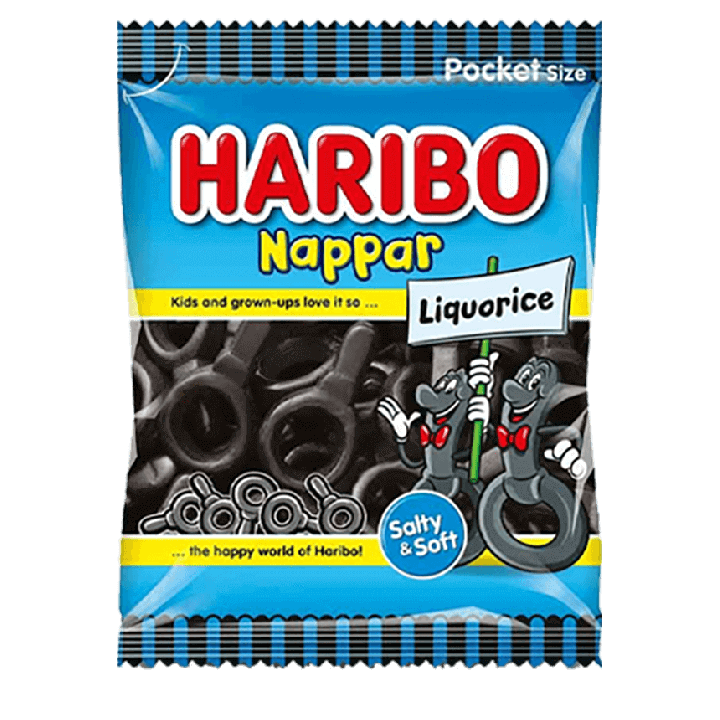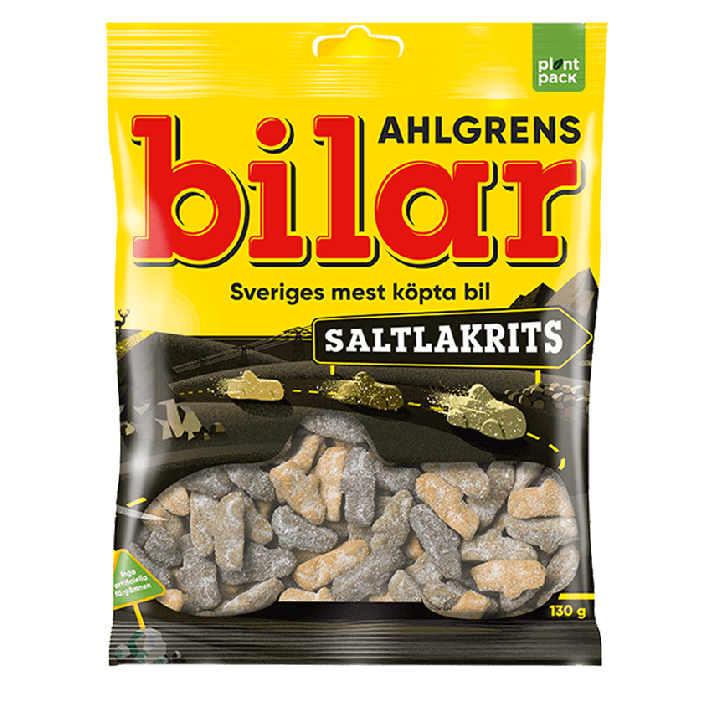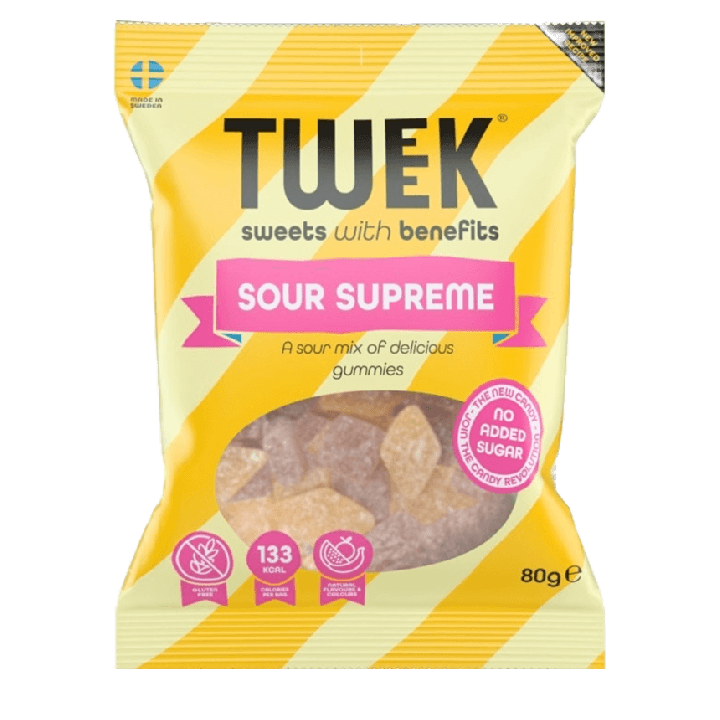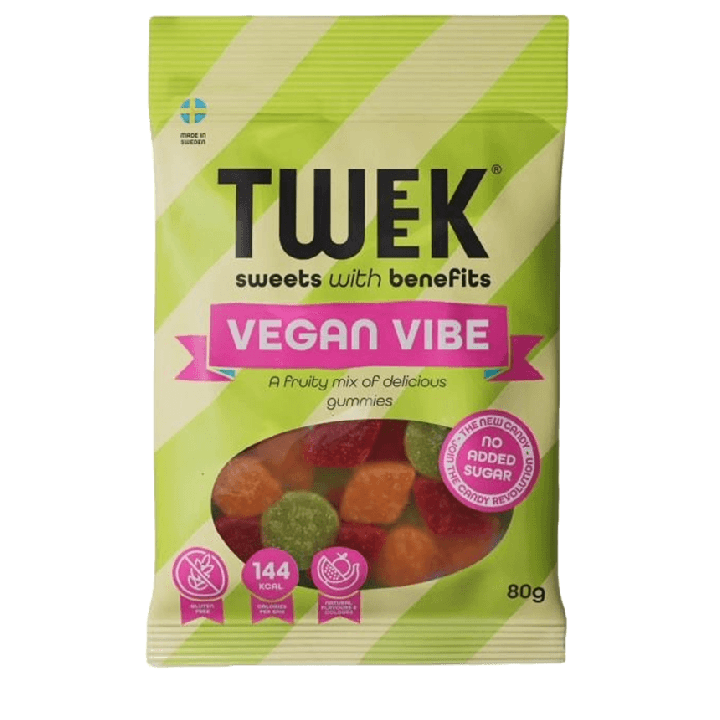In today’s article, we are diving deep into one of the most unique and polarizing types of Swedish candy: salty licorice. We will explore what makes it so different, why it is loved (or feared), and how it fits into the world of international candy. We will also highlight some popular products, their ingredients, and how they relate to current trends like vegan candy, sugar free sweets and healthy candy options.
Table Of Contents
The Bold Flavor of Salty Licorice
Salty licorice, or "salmiak" as it is often called in Sweden, is a defining element of Swedish candy culture. Unlike sweet licorice that many international candy lovers are familiar with, Swedish salty licorice delivers a more complex taste. It combines the deep earthiness of licorice root with the sharp, almost savory bite of ammonium chloride, which gives it its signature salty tang.
This kind of licorice is not designed to please everyone. It is strong, surprising and often described as polarizing. But for many Swedes, and growing numbers of international candy enthusiasts, it is a nostalgic and comforting flavor — tied to childhood memories, adventurous taste buds and a love for bold, distinctive candy experiences.
Why Is Salty Licorice So Popular in Sweden?
Salty licorice reflects the Scandinavian palate: bold, brave and unapologetic. As described in Vogue Scandinavia, it is deeply woven into Nordic identity, rooted in tradition and regional taste preferences. For generations, it has been a staple in Swedish candy traditions, appearing in everything from childhood memories to seasonal favorites. While sweet gummies, chocolate, and foamy marshmallow treats are universally appreciated, salty licorice holds a deeper cultural meaning in Sweden.
It is not just a candy but a symbol of taste preference and identity. Many grow up eating it, and the sharp, salty flavor becomes comforting over time. Products like Djungelvrål and Tyrkisk Peber are almost rites of passage for newcomers, and among Swedes abroad, salty licorice often evokes strong nostalgia and a taste of home.
Common Varieties of Swedish Licorice
-
Tyrkisk Peber 150 g – A fiery blend of strong licorice and spicy salmiak
-
Djungelvrål 80 g – A sharp, sour, salty licorice coated in sugar
-
S-märke Supersalt 80 g – Extra salty and chewy licorice coins
-
Haribo Lakrits Nappar 80 g – Classic black licorice gummy rings
-
Bubs Hallonlakritsskalle 90 g – A popular raspberry licorice skull
-
Ahlgrens Bilar Saltlakrits 130 g – A twist on the beloved foam car candy
Swedish Licorice in the World of Healthy Candy
With increasing global interest in diet candy, sugar free sweets and plant based alternatives, even the world of Swedish licorice is seeing innovation. While traditional salty licorice remains popular, there is a growing demand for healthier versions that align with new lifestyle trends.
Some licorice-inspired products are now available in gelatin free and gluten free formats, with certain items even offering sugar free options for those mindful of blood sugar levels or calorie intake. While not all licorice products are part of this shift, the movement toward healthy candy is influencing how licorice is made, marketed and enjoyed.
Though many health-conscious innovations are found in fruity gummies and chewy candy rather than salty licorice, they share the same Swedish roots. This evolution makes Swedish candy more inclusive, appealing to those asking questions like “Can I eat candy on a diet?” or “What is the best candy to eat when trying to lose weight?”
Health-Conscious Options
Although not licorice, some Swedish brands are offering healthier alternatives in the broader candy segment. Brands like Tweek and Pändy are leading the way with:
-
Tweek Sour Supreme 80 g – A low sugar and low calorie gummy option
-
Pändy Peach rings 50 g – High in fiber and a smart choice for weight loss goals
-
Tweek Vegan Vibe 80 g – A 100 percent vegan candy full of fruity flavor, described in more detail on Tweek’s official site
These treats are perfect for those managing blood sugar levels or searching for the best candy to eat on a diet.
Ingredients and Characteristics of Swedish Licorice
Understanding what makes Swedish licorice special starts with its ingredients. While most licorice around the world uses licorice root extract for flavoring, Swedish salty licorice takes things a step further with the addition of ammonium chloride. This compound adds the intense, tangy saltiness that defines "salmiak" licorice.
Common Ingredients in Salty Licorice
-
Licorice root extract – For the base earthy sweetness
-
Ammonium chloride (salmiak) – Adds saltiness and sharpness
-
Sugar or sweeteners – Depending on whether it is a traditional or sugar free version
-
Starch or gelatin – For chewy texture (note: many brands now offer gelatin free and vegan options)
-
Food coloring – Typically used for darker licorice tones
Texture and Appearance
Swedish licorice comes in many forms: soft foamy skulls, firm chewy coins, gummy rings and even sugar coated bites. Some are black and glossy, while others are dusted in sugar or powder. The texture can range from melt-in-your-mouth soft to tough and elastic, depending on brand and variety.
Brands like Bubs specialize in foamy and gummy vegan options, while Haribo and Malaco offer more classic, chewy licorice varieties. Whether it is a mild fruity blend like Bubs Hallonlakritsskalle or the intense heat of Tyrkisk Peber, every variety has its own personality and place in the world of Swedish candy.
Vegan and Plant Based Licorice
Traditional licorice often contains gelatin, but today’s Swedish brands offer alternatives for everyone.
Notable Vegan Licorice Treats
-
Bubs: Known for their vegan friendly foamy and gummy ovals and skulls
-
Tweek: A pioneer in plant based candy with a wide selection of vegan sweets
-
Malaco’s Gott och Blandat: Includes some vegan gummies among their mixes
How Swedish Licorice Fits Into International Candy Trends
Swedish licorice is gaining traction internationally thanks to its bold flavor and distinct cultural identity. On social media, influencers and taste testers frequently feature salty licorice in reaction videos or taste challenges. The reactions vary. Some are instantly hooked, while others find the taste overwhelming, but that contrast is exactly what keeps salty licorice in the spotlight.
In an international candy market dominated by sweet, fruity and visually appealing gummies, Swedish licorice offers something completely different. It appeals to adventurous taste buds and those seeking a candy experience with heritage, complexity and bite.
More and more specialty stores and online platforms now include Swedish salty licorice in their international candy assortments, alongside well known brands like Marabou, Haribo and Fazer. This growing presence introduces new audiences to the depth of Swedish candy culture and often sparks curiosity about other Scandinavian favorites such as Bubs vegan gummies or Malaco’s Gott och Blandat mixes.
Salty licorice is no longer just a niche Scandinavian treat. It is part of a global conversation about taste, identity and the evolving world of candy.
FAQs About Swedish Licorice
Can I eat salty licorice on a diet?
Yes, especially if you choose sugar free or low calorie versions. While traditional salty licorice often contains sugar, brands like Pändy and Tweek have developed alternatives that fit within a healthy candy lifestyle. These are ideal for those watching their blood sugar levels or aiming to lose weight without giving up the occasional treat.
Is salty licorice vegan?
Some varieties are. Traditional licorice can contain gelatin, but several Swedish brands now offer vegan candy alternatives. Look for products from Bubs or Tweek labeled as plant based candy or gelatin free. Always check the ingredients to ensure compatibility with your dietary choices.
Why does salty licorice taste so intense?
The bold flavor comes from ammonium chloride, an ingredient that gives salty licorice its characteristic salty, tangy and slightly bitter taste. For many first-time tasters, this creates a surprising punch. But for fans, that intensity is exactly what makes it unforgettable.
What is the difference between regular and salty licorice?
Regular licorice tends to be sweet and mellow, often blended with sugar and other flavorings. Salty licorice, on the other hand, has a sharper edge due to the presence of ammonium chloride. It is often firmer in texture and more challenging in flavor. Both types exist in Swedish candy assortments, sometimes even combined in one bag, like in Malaco’s Gott och Blandat.
Are there gluten free options for salty licorice?
Yes, some salty licorice products are also gluten free. Always look for labels or check product descriptions carefully. Brands focused on dietary needs, such as Tweek, may offer gluten free options, even if their focus is primarily on gummies rather than licorice.
Why do Swedes love salty licorice so much?
It is part of the national taste profile. Many Swedes grow up eating salty licorice, and it becomes an acquired taste that brings a sense of nostalgia and identity. It is also used in seasonal and novelty candy, making it a recurring feature in Swedish culture.
Conclusion: A Bold Taste Worth Trying
Swedish licorice is not just candy, it is an experience. From classic favorites like Djungelvrål and Tyrkisk Peber to modern, vegan and sugar free options, it offers something for every kind of candy lover. Whether you are exploring international candy trends or simply curious about new flavors, salty licorice is a bold, unforgettable choice.
Key Takeaways
-
Swedish licorice is a signature part of Swedish candy culture
-
Salty licorice offers a strong, unique flavor that divides opinions
-
Vegan candy and plant based candy options are widely available
-
Sugar free, low calorie candy helps support weight loss and blood sugar levels
-
Swedish brands like Bubs, Tweek, Malaco, Cloetta and Fazer offer both traditional and health conscious versions


